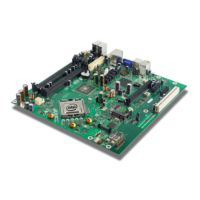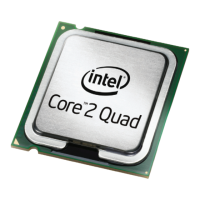1
/
16
-
1
/
8
-
1
/
4
DIN LIMIT CONTROLLERS
CONCISE PRODUCT MANUAL (59333-2)
CAUTION: Installation should be only performed by
technically competent personnel. Local Regulations
regarding electrical installation & safety must be observed.
1. INSTALLATION
The models covered by this manual have three different DIN case sizes (refer to
section 9). Some installation details vary between models. These differences have
been clearly shown.
Note: The functions described in sections 2 thru 8 are common to all models.
Installing Option Modules
1
/
16
Din Size Instruments
PSU PCB
1
/
8
&
1
/
4
Din Size Instruments
PSU PCB
To access module A, first detach the PSU and CPU boards from the front by lifting
first the upper, and then lower mounting struts. Gently separate the boards.
a. Plug the required option modules into the correct connectors, as shown below.
b. Locate the module tongues in the corresponding slot on the opposite board.
c. Hold the main boards together while relocating back on the mounting struts.
d. Replace the instrument by aligning the CPU and PSU boards with their guides
in the housing, then slowly push the instrument back into position.
Note: Option modules are automatically detected at power up.
Option Module Connectors
1
/
16
Din Size Instruments
Connectors
PL5 & PL6
Option Slot 3
Connector
PL4B
1
/
8
&
1
/
4
Din Size Instruments
Connectors
PL5 & PL6
Option Slot 3
Connector
PL4B
Panel-Mounting
The mounting panel must be rigid, and may be up to
6.0mm (0.25inch) thick. Cut-out sizes are:
Cut-Out Dim A Cut-Out Dim B
1
/
16
&
1
/
8
Din = 45mm
1
/
16
Din = 45mm
1
/
4
Din = 92mm
1
/
8
&
1
/
4
Din = 92mm
For n multiple instruments mounted side-by-side, cut-out
A is 48n-4mm (
1
/
16
&
1
/
8
Din) or 96n-4mm (
1
/
4
Din)
Tolerance +0.5, -0.0mm
Slide mounting clamp
over the instrument
housing towards rear face
of mounting panel until
the tongues engage in
ratchets
clamped in position.
Hold instrument firmly in
position (apply pressure
to bezel only)
CAUTION: Do not remove the panel gasket; it is a seal against dust and
moisture.
Rear Terminal Wiring
USE COPPER CONDUCTORS (EXCEPT FOR T/C INPUT)
Single Strand wire gauge: Max 1.2mm (18SWG)
1
/
16
Din Size Instruments
1
/
8
&
1
/
4
Din Size Instruments
These diagrams show all possible option combinations. The actual
connections required depends on the exact model and options fitted.
CAUTION: Check information label on housing for correct operating
voltage before connecting supply to Power Input
Fuse: 100 – 240V ac – 1amp anti-surge
24/48V ac/dc – 315mA anti-surge
Note: At first power-up the message
is displayed, as described in
section 6 of this manual. Access to other menus is denied until configuration
mode is completed
2. SELECT MODE
Select mode is used to access the configuration and operation menu functions.
It can be accessed at any time by holding down and pressing .
In select mode, press or to choose the required mode, press to enter.
An unlock code is required to prevent unauthorised entry to Configuration, & Setup
modes. Press or to enter the unlock code, then press to proceed.
Mode Upper
Display
Lower
Display
Description Default
Unlock
Codes
Operator
Normal operation None
Set Up
Tailor settings to the application
Configure the instrument for use
Product Info
Check manufacturing information None
Note: The instrument will always return automatically to Operator mode if
there is no key activity for 2 minutes.
3. CONFIGURATION MODE
First select Configuration mode from Select mode (refer to section 2).
Press to scroll through the parameters, then press or to set the required
value. Press to accept the change, otherwise parameter will revert to previous
value. To exit from Configuration mode, hold down and press , to return to
Select mode.
Note: Parameters displayed depends on how instrument has been configured.
Refer to user guide (available from your supplier) for further details.
Parameters marked * are repeated in Setup Mode.
Parameter Lower
Display
Adjustment range & Description
Input
Range/Type
See following table for possible codes
Code Input Type &
Range
Code Input Type &
Range
Code Input Type &
Range
bC
bCbC
bC
B: 100 - 1824 ºC
L
LL
L
.
C
CC
C
L: 0.0 - 537.7 ºC
bF
bFbF
bF
B: 211 - 3315 ºF
L
LL
L
.
F
FF
F
L: 32.0 - 999.9 ºF
P24F
P24FP24F
P24F
PtRh20% vs 40%:
32 - 3362 ºF
CC
CCCC
CC
C: 0 - 2320 ºC
NC
NCNC
NC
N: 0 - 1399 ºC
PTC
PTCPTC
PTC
Pt100: –199 - 800 ºC
CF
CFCF
CF
C: 32 - 4208 ºF
NF
NFNF
NF
N: 32 - 2551 ºF
PtF
PtFPtF
PtF
Pt100: –328 - 1472 ºF
JC
JCJC
JC
J: –200 - 1200 ºC
rC
rCrC
rC
R: 0 - 1759 ºC
P
PP
Pt
tt
t
.
C
CC
C
JF
JFJF
JF
J: –328 - 2192 ºF
rF
rFrF
rF
R: 32 - 3198 ºF
Pt
PtPt
Pt
.
F
FF
F
SC
SCSC
SC
S: 0 - 1762 ºC
J: –199.9 - 999.9 ºF
SF
SFSF
SF
S: 32 - 3204 ºF
4 - 20 mA DC
KC
KCKC
KC
K: –240 - 1373 ºC
tC
tCtC
tC
T: –240 - 400 ºC
0 - 50 mV DC
KF
KFKF
KF
K: –400 - 2503 ºF
tF
tFtF
tF
T: –400 - 752 ºF
.
K: –128.8 - 537.7 ºC
t
tt
t
.
C
CC
C
T: –128.8 - 400.0 ºC
0 - 5 V DC
K
KK
K
.
F
FF
F
K: –199.9 - 999.9 ºF
t
tt
t
.
F
FF
F
T: –199.9 - 752.0 ºF
1 - 5 V DC
LC
LCLC
LC
L: 0 - 762 ºC
0 - 10 V DC
LF
LFLF
LF
L: 32 - 1403 ºF
P24C
P24CP24C
P24C
PtRh20% vs. 40%:
0 - 1850 ºC
2 - 10 V DC
Note: Decimal point shown in table indicates temperature resolution of 0.1°
Parameter Lower
Display
Adjustment range & Description
Scale Range
Upper Limit
Scale Range Lower Limit +100
to Range Maximum
Scale Range
Lower Limit
Range Minimum to
Scale Range Upper Limit -100
Decimal point
position
=XXXX,
=XXX.X,
=XX.XX,
=X.XXX
(non-temperature ranges only)
±Span of controller
(see CAUTION note at end of section)
High Limit.
Limit relay is energised when
process “safe” (PV < Limit Setpoint)
Limit Action
Low Limit.
Limit relay is energised when
process “safe” (PV > Limit Setpoint)
Setpoint Upper
Limit
Current Setpoint to Scale Range maximum
Setpoint Lower
Limit
Scale Range minimum to Current Setpoint
Process High Alarm
Process Low Alarm
Deviation Alarm
Band Alarm
Alarm 1Type
No alarm
High Alarm 1
value*
Low Alarm 1
value*
Scaled Range Minimum to
scaled Range Maximum in display units
Range Min
Band Alarm 1
value*
1 LSD to span from setpoint in display units
Dev. Alarm 1
value*
+/- Span from setpoint in display units
Alarm 1
Hysteresis*
!
!!
!
1 LSD to full span in display units
Adjustment range & Description
Alarm 2 Type*
High Alarm 2
value*
Low Alarm 2
value*
Band Alarm 2
value*
Dev. Alarm 2
Value*
Alarm 2
Hysteresis*
!
!!
!
Options as for alarm 1
Limit Output Relay
"
""
"
Alarm 1, Direct
Alarm 1, Reverse
Alarm 2, Direct
Alarm 2, Reverse
Logical Alarm 1 OR 2, Direct
Logical Alarm 1 OR 2, Reverse
Logical Alarm 1 AND 2, Direct
Logical Alarm 1 AND 2, Reverse
Limit Annunciator, Direct
Limit Annunciator, Reverse
"
""
"
Retransmit Limit SP Output
Output 2 Usage
#
##
#
Retransmit PV Output
0 to 5 V DC output 1
0 to 10 V DC output
2 to 10 V DC output
0 to 20 mA DC output
Linear Output 2
Range
!
!!
!
4 to 20 mA DC output
Retransmit
Output 2 Scale
maximum
-1999 to 9999
(display value at which output
will be maximum)
Range max
Retransmit
Output 3 Scale
minimum
-1999 to 9999
(display value at which output
will be minimum)
Range min
Output 3 Usage
#
##
#
As for output 2
"
""
"
Linear Output 3
Range
!
!!
!
As for output 2
Retransmit
Output 3 Scale
maximum
-1999 to 9999
(display value at which output
will be maximum)
Range max
Retransmit
Output 3 Scale
minimum
-1999 to 9999
(display value at which output
will be minimum)
Range min
PV is visible in Operator mode
PV not visible in Operator mode
Display Strategy
Displays
in Operator mode
when Limit Output is not active
Modbus with no parity
Mm
MmMm
Mm
Modbus with Even Parity
Serial
Communications
Protocol
Modbus with Odd Parity
Mm
MmMm
Mm
.
1.2 kbps
.
2.4 kbps
.&
&&
&
4.8 kbps
'
''
'.(
((
(
9.6 kbps
Serial
Bit Rate
1 to 255 (Modbus), 1 to 99 (ASCII)
Read/Write
Comms Write
Read only
Ww
WwWw
Ww
Configuration
Lock Code
)
))
)
Notes: Output 1 is always a Latching Limit Relay output.
If Option Slot A has the Digital Input module fitted, this always functions as a
Remote Reset, duplicating the function of the Reset) key .
As these functions cannot be changed, no Configuration menus are required.
CAUTION: Process Variable Offset can be used to modify the
measured value to compensate for probe errors. Positive values
increase the reading, negative values are subtracted. This parameter
is effectively, a calibration adjustment and MUST be used with care.
There is no front panel indication of when this parameter is in use.
A
B












